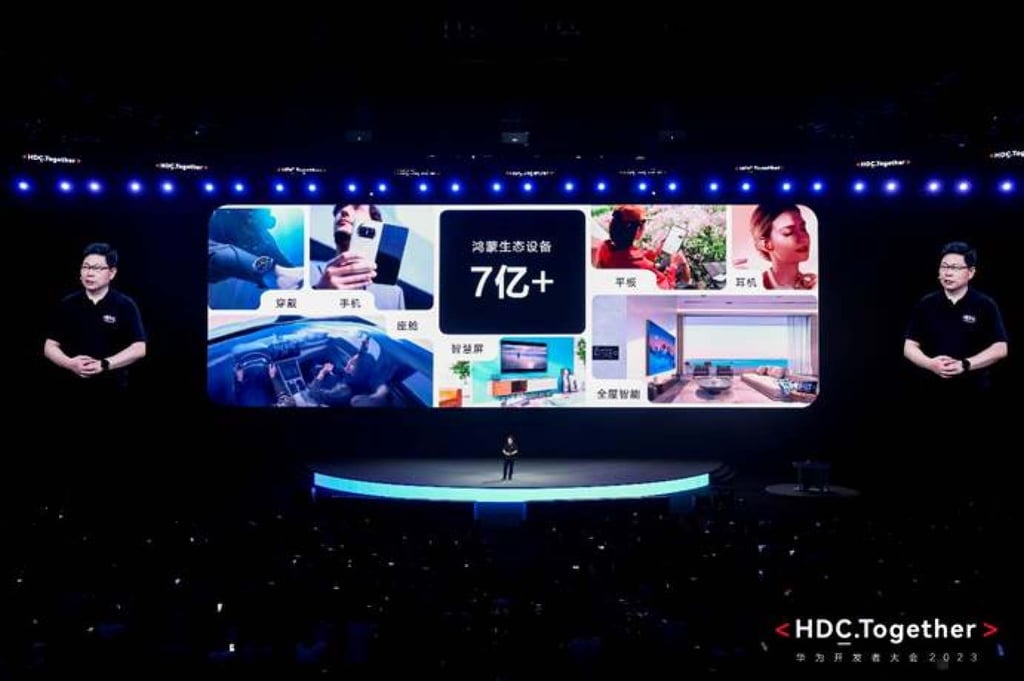Advertisement
Tech war: Huawei to revive smartphone business on the back of fresh AI-powered operating system even as US sanctions continue to bite
- HarmonyOS 4, the latest iteration of Huawei’s self-developed operating system, has been integrated with the firm’s own AI model Pangu
- Huawei’s Android alternative has enhanced support for other devices in Huawei’s ecosystem, including its smart electric vehicles
Reading Time:3 minutes
Why you can trust SCMP
8

Iris Dengin Shenzhen
Huawei Technologies expects to revive its once high-flying smartphone business on the back of its latest Harmony operating system upgrade, even as the US-blacklisted company continues to face uncertainty over its 5G chip supply and a challenging macroeconomic environment.
“Huawei’s flagship smartphones are making a comeback,” Richard Yu Chengdong, chief executive of the company’s consumer business group and its Intelligent Automotive Solution business unit, said last Friday at its annual developer conference in Dongguan, a city in southern Guangdong province, where its HarmonyOS 4 was unveiled.
Yu’s optimistic assessment comes after privately-held Huawei resurfaced as a top-five smartphone vendor in mainland China during the second quarter, according to data from research firm IDC. Huawei had surpassed Samsung Electronics to become the world’s biggest smartphone vendor in the second quarter of 2020, but saw this business struggle subsequently owing to tightened US sanctions that cut off its access to advanced mobile chips.
Advertisement
At its developer conference, Huawei said HarmonyOS 4 has been integrated with the company’s own generative artificial intelligence model Pangu to provide ChatGPT-like services, including automated messaging and creation of images.

HarmonyOS 4 is also expected to enhance support for other devices such as smart electric vehicles, a major sector that Huawei has targeted in recent years. At the conference, Yu said HarmonyOS is now connected to more than 700 million devices and had more than 2.2 million developers in its ecosystem.
Advertisement
Advertisement
Select Voice
Choose your listening speed
Get through articles 2x faster
1.25x
250 WPM
Slow
Average
Fast
1.25x